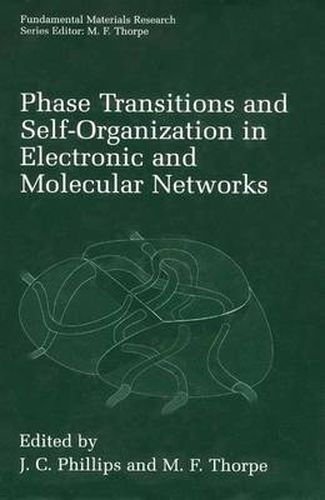Readings Newsletter
Become a Readings Member to make your shopping experience even easier.
Sign in or sign up for free!
You’re not far away from qualifying for FREE standard shipping within Australia
You’ve qualified for FREE standard shipping within Australia
The cart is loading…






This title is printed to order. This book may have been self-published. If so, we cannot guarantee the quality of the content. In the main most books will have gone through the editing process however some may not. We therefore suggest that you be aware of this before ordering this book. If in doubt check either the author or publisher’s details as we are unable to accept any returns unless they are faulty. Please contact us if you have any questions.
Advances in nanoscale science show that the properties of many materials are dominated by internal structures. In molecular cases, such as window glass and proteins, these internal structures obviously have a network character. However, in many partly disordered electronic materials, almost all attempts at understanding are based on traditional continuum models. This volume focuses first on the phase diagrams and phase transitions of materials known to be composed of molecular networks. These phase properties characteristically contain remarkable features, such as intermediate phases that lead to reversibility windows in glass transitions as functions of composition. These features arise as a result of self-organization of the internal structures of the intermediate phases. In the protein case, this self-organization is the basis for protein folding. The second focus is on partly disordered electronic materials whose phase properties exhibit the same remarkable features. In fact, the phenomenon of high temperature superconductivity, discovered by Bednorz and Mueller in 1986, and now the subject of 75,000 research papers, also arises from such an intermediate phase. More recently discovered electronic phenomena, such as giant magnetoresistance, also are made possible only by the existence of such special phases. This book gives an overview of the methods and results obtained so far by studying the characteristics and properties of nanoscale self-organized networks. It demonstrates the universality of the network approach over a range of disciplines, from protein folding to the newest electronic materials.
$9.00 standard shipping within Australia
FREE standard shipping within Australia for orders over $100.00
Express & International shipping calculated at checkout
Stock availability can be subject to change without notice. We recommend calling the shop or contacting our online team to check availability of low stock items. Please see our Shopping Online page for more details.
This title is printed to order. This book may have been self-published. If so, we cannot guarantee the quality of the content. In the main most books will have gone through the editing process however some may not. We therefore suggest that you be aware of this before ordering this book. If in doubt check either the author or publisher’s details as we are unable to accept any returns unless they are faulty. Please contact us if you have any questions.
Advances in nanoscale science show that the properties of many materials are dominated by internal structures. In molecular cases, such as window glass and proteins, these internal structures obviously have a network character. However, in many partly disordered electronic materials, almost all attempts at understanding are based on traditional continuum models. This volume focuses first on the phase diagrams and phase transitions of materials known to be composed of molecular networks. These phase properties characteristically contain remarkable features, such as intermediate phases that lead to reversibility windows in glass transitions as functions of composition. These features arise as a result of self-organization of the internal structures of the intermediate phases. In the protein case, this self-organization is the basis for protein folding. The second focus is on partly disordered electronic materials whose phase properties exhibit the same remarkable features. In fact, the phenomenon of high temperature superconductivity, discovered by Bednorz and Mueller in 1986, and now the subject of 75,000 research papers, also arises from such an intermediate phase. More recently discovered electronic phenomena, such as giant magnetoresistance, also are made possible only by the existence of such special phases. This book gives an overview of the methods and results obtained so far by studying the characteristics and properties of nanoscale self-organized networks. It demonstrates the universality of the network approach over a range of disciplines, from protein folding to the newest electronic materials.